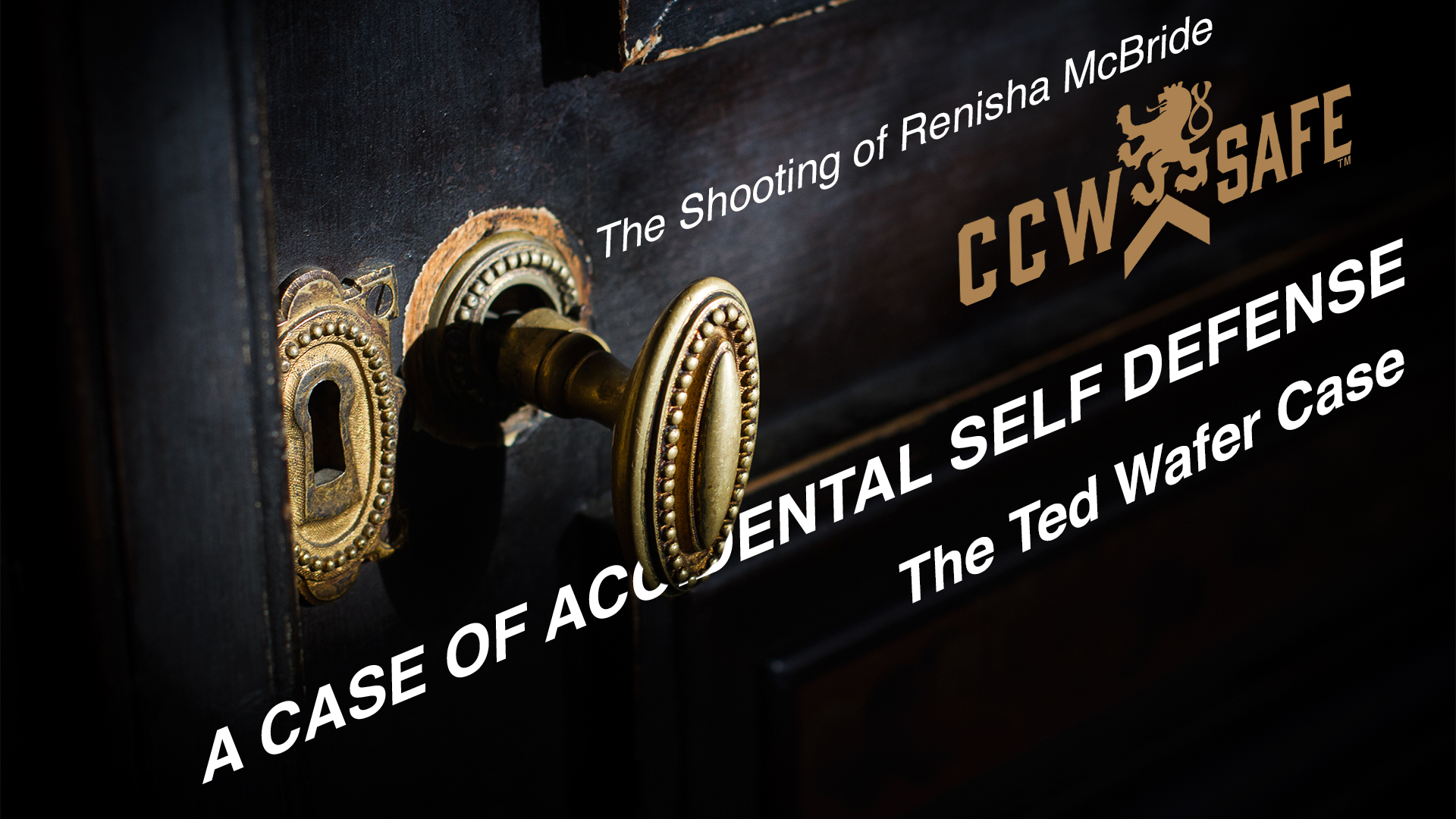
Posted on May 3, 2018 by Shawn Vincent in Shawn Vincent
The Accidental Case of Self Defense- The Shooting of Renisha McBride-Reasonable Fear
The Shooting of Renisha McBride
A case of ‘accidental self-defense’
Part 4: Reasonable Fear and the Legal Defense of Ted Wafer
Ted Wafer was startled awake at 3:45 A.M. by violent pounding on the doors of his house in the Detroit suburb of Dearborn Heights. It’s a neighborhood that had endured a rising crime rate over the twenty years that Wafer called it home. He lived there alone. It takes very little imagination to understand why Wafer was “upset” and “scared” — words he used in court to describe his state of mind.
Unable to find his cell phone, Wafer grabbed his pistol-grip Mossberg shotgun, and he opened the front door to his house to confront the “shadowy figure” he saw through the peephole. As soon as he opened the door, the person on his porch tried to push through the locked screen door. Wafer’s shotgun discharged, killing 19-year-old Renisha McBride. McBride was unarmed, intoxicated, and disoriented from a single-driver accident she had been in hours before. She was probably pounding on his door because she was confused and desperate for help.
Of course, Wafer had no way to know any of those details about the person who was banging so hard on his door that it made the floor shake. At trial, Wafers attorney Cheryl Carpenter said, “He did not know it was a 19-year-old who got caught in a car crash at 1 am. What he knew was that someone was trying to get in. It’s not for a good reason. It’s to hurt me.”
Don West, National Trial Counsel for CCW Safe and veteran criminal defense attorney, said, “He would not have known that she was drunk or high. He would see someone out of control and physically aggressive. It’s hard for him to say ‘you’re not a threat.’”
Simply believing that the shadowy figure baning on his front door was a threat, however, didn’t justify the use of deadly force in Wafer’s case. The threat of harm or death must be imminent before a gun owner can pull the trigger in self-defense. Prosecutors made the case at trial that McBride’s actions never crossed that threshold.
During closing arguments, prosecutors told the jury that “what he did had to be immediately necessary, and it wasn’t. It was reckless. It was negligent. I don’t know how to describe it. It was horrific.”
Wafer’s lawyer asked the jury to put themselves in Wafer’s shoes. “In the heat of the moment our instincts are to survive,” she told jurors.
Ultimately, jurors agreed with prosecutors and convicted Wafer on second degree murder.
Ted Wafer’s lesson for the concealed carrier or gun owner interested in home protection is that fear alone — even a reasonable fear — is not enough to justify deadly force. In this series, we often talk about “reasonable fear of imminent bodily harm or death” as a threshold for using deadly force in self-defense, but the prosecutors in this case used another term that’s worth considering: “immediately necessary.” Firing your weapon in self-defense must be immediately necessary to prevent harm or death, otherwise the shooting is not justified, no matter how afraid you might be. As Don West says, “Unreasonable fear is never an excuse to take someone’s life.”
In the next installment of The Four Elements of Self-Defense, we’ll explore how Wafer’s post-incident actions affect his legal defense.

Shawn Vincent- Litigation Consultant
Shawn Vincent is a litigation consultant who helps select juries in self-defense cases, and he manages public interest of high-profile legal matters. If you have any questions for Shawn, or would like more articles like this, let us know below!